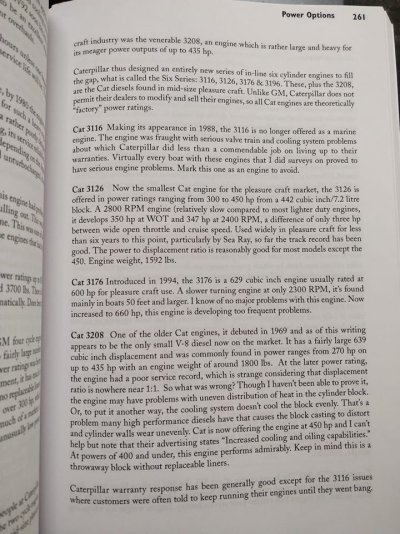rendern
Member
- Joined
- May 14, 2012
- Messages
- 13
- Location
- U.S.A.
- Vessel Name
- Witch of November
- Vessel Make
- 2000 Offshore 54
Side comment but I have to take exception with this repeated claim that one should RUN from a low hour engine. Lots of us live in Northern climates (including Riverguy at some point). We have 4 months where you have a good shot at boating, particularly if you work for a living and can only get out on weekends. 500 hours over 20 years of 4 month seasons is plenty of time to get up to operating temperature every time, I can assure you. If I cruise a few hours out to my favorite island, anchor for the weekend and dinghy around, and cruise back I don't put on a lot of hours. But that certainly doesn't mean that I don't check and maintain the engine.
Moreover, these boats are winterized every year, which for anyone who has their engines maintained professionally always includes an oil change, regardless of hours. My oil is clean as new every season but it gets change anyway. Also for many of us Northerners, the usage is in fresh water which is far less corrosive in "marine hours" regardless of engine hours.
Especially as someone who has a super well maintained, low hour boat on the market right now, I find these claims to "run away" as silly.
BD
No argument to your point. I agree, but for every one of your well maintained northern boats, there are plenty of low hour boats that the owner (or Admiral) had a bad experience with or lost interest in which become the neglected stepchild. That's all I'm saying. Wasn't trying to offend low hour boats. As you point out, as did I at the end of my original post, maintenance is key, regardless of brand.



 Rendern was the one that said RUN. I apologize.
Rendern was the one that said RUN. I apologize. 